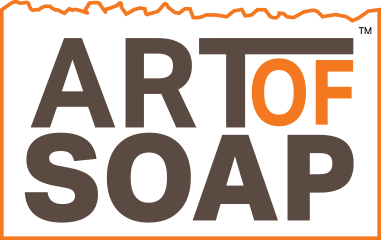Background
Art Felix is the epitome of the American dream. Art is a first-generation Mexican-American born and raised in Central California farming country. He attended the University of California at Long Beach and earned a degree in Aerospace Engineering and followed that up with a Masters from the University of Southern California. Later in life, Art found he had a passion for learning about how products you consume and put on your body impact your overall health.
Around 2014, Art began studying how the lotions and soaps you use on your body impact your skin and overall health. He began making soap and over the course of 5 years perfected a formula that he felt nourished your skin as well as cleaned it. To his surprise, Art developed a devoted following of users of his soap. Friends and acquaintances constantly asked Art if he had soap available.
In 2019 Art retired after a long and successful career in the Aerospace industry. Not surprisingly, Art didn’t do well with retirement. He was bored. I’m sure you can guess the rest of the story. Now Art spends his days making soap. And frankly, we think he makes amazing soap.
Art’s first attempt at making homemade soap
You know when you get really excited about making something…
Then it flops?
That was me making soap for the first time.
Growing up, I was always interested in making things.
I loved being outside in the garden, and growing herbs in every little spare area of the garden. My mom didn’t appreciate my spearmint overtaking the rest of her garden quite as much as I did, but she still allowed me to explore my creativity.
One of the books at home that I loved was a book about making your own soaps and perfumes. I followed a few of the recipes, but didn’t really have much luck with them. I tried making a rose petal perfume, but it made a brown liquid that went bad right away.
If you’ve never tried a bar of real natural handmade soap, you’re in for a treat. If you have tried one, and know just how wonderful it is, you’ll be surprised that making your own soap is not as difficult as you think.
Before you begin making soap, read the following safety warnings:
Keep in mind when making soap that you have to be very careful with the lye. I don’t think the book I had read was quite as emphatic about that as most places I have read since. I don’t remember mixing the lye into the water outside or wearing protective gloves or glasses. Luckily, nothing bad happened.
I don’t want to scare you, but I do want you to be careful. Lye is a strong base that is very caustic and can cause chemical burns just like any strong acid would. Keeping that in mind, protect yourself when making soap!
Melt and Pour Soap vs Cold Press Soap
Melt and Pour Soap Making
Making soap with a melt and pour base is sort of like making a cake with a cake mix. What you lose in control of your ingredients and customization of your recipe, you make up for in safety, ease, and convenience.
With melt and pour soap making, you buy pre-made blocks of uncolored, unscented soap “base” from a craft store or soap supplier. You melt the soap base in the microwave or a double boiler. When the soap is fully melted, add fragrance, color and/or additives. Put it in a mold, and voila, you’re done. The soap is ready to use as soon as it hardens.
To get started with melt and pour soap making, you need:
- A countertop or other clean workspace with a microwave or double boiler
- A heat-resistant bowl for the microwave
- A couple of spoons or whisks
- Some melt and pour soap base
- A set of measuring spoons
- Fragrance, color, or additives, as desired
- Something to mold the soap in
Cold Press Soap Making
Cold-process soap is a beautiful looking handmade soap that, when scented with essential oils and colored with botanical elements, makes for a project you can make at home that looks like it came from an artist’s gallery. Cold-process soap has no additives that are bad for the earth and it is gentle on sensitive skin.

